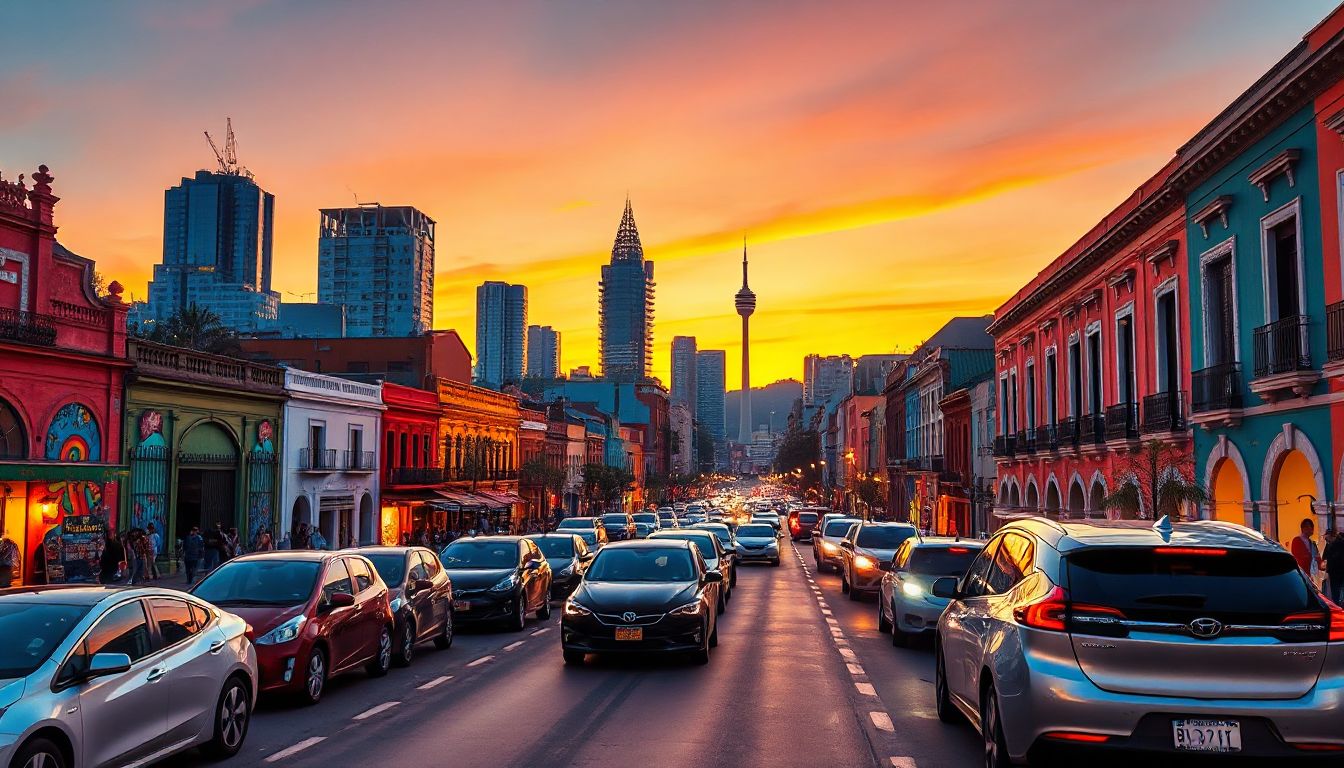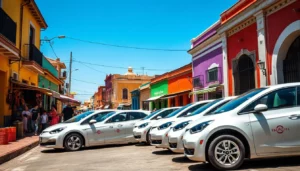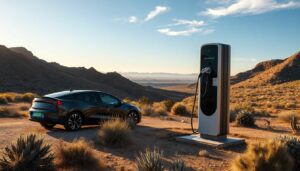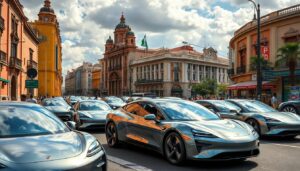Introduction
Mexico City is pushing to clean up its streets. With pollution levels often soaring, the city knows the clock is ticking. More residents and officials are turning to electric vehicles (EVs) as a way to fight smog and improve air quality. Across the globe, EVs are gaining ground as a cleaner, smarter way to get around. Mexico is no different. Now, with new policies and better infrastructure, EVs are becoming a real option for many drivers here. This shift isn’t just about new tech—it’s about a healthier city and a brighter future for everyone.
The Current State of Electric Vehicles in Mexico City
EV Adoption Rates and Market Penetration
Electric cars are starting to show up more often on Mexico City streets. According to recent reports, EV registrations in the city grew by over 65% in the last year. While they still make up a small part of all vehicles, this growth shows more residents are interested in cleaner options. Factors like rising fuel costs, better models, and environmental awareness help drive this change. Still, EV owners in Mexico City are a small share of all drivers, but the trend is moving fast.
Government Policies and Incentives
The government has rolled out several policies to encourage EV use. These include tax credits, subsidies for electric car buyers, and reduced registration fees. The local government also pushes for rules that favor EVs, like special lanes and parking spots. Plus, there’s a focus on increasing charging options around the city to make EV ownership easier. These initiatives aim to cut emissions and make cleaner vehicles the default for urban residents.
Infrastructure Development and Charging Networks
Mexico City is expanding its charging stations steadily. Today, there are more than 200 public chargers, with plans to increase that number to over 500 in the next few years. Public-private partnerships drive this growth, with companies like Electromov and government agencies working together. Fast-charging stations are also appearing, making long trips easier for EV owners. This improved infrastructure is a key part of making electric vehicles practical for everyday use.
Benefits of Transitioning to Electric Vehicles in Mexico City
Environmental Impact and Air Quality Improvement
Mexico City struggles with air pollution, often hitting dangerous levels. Experts estimate that replacing just 10% of traditional cars with EVs could significantly reduce smog. Electric cars produce no tailpipe emissions, helping clear the air and protect public health. Cleaner transportation means fewer respiratory issues and a better quality of life. As EVs become more common, hope grows that the city can breathe easier again.
Economic Advantages for Residents and the City
Switching to EVs also saves money in the long run. Electricity costs less than fuel, and maintenance is easier, since electric motors have fewer moving parts. Drivers report saving hundreds of dollars yearly. Growing EV use could also boost local jobs — from manufacturing to charging station maintenance. A greener city can attract new investments and make Mexico City more competitive as a clean transportation hub.
Enhancing Urban Mobility and Reducing Noise Pollution
EVs are much quieter than traditional cars, which helps make city streets less noisy. This reduction in noise pollution improves life for residents and workers alike. Quiet vehicles also create smoother traffic flow, easing congestion. Cleaner, quieter streets boost urban mobility, making it easier for people to get around comfortably and efficiently.
Challenges and Barriers to EV Adoption in Mexico City
Limited Charging Infrastructure and Accessibility
Even with new chargers popping up, many areas lack easy access to charging stations. Residents in apartment buildings often can’t find public chargers nearby. Limited charging points make some hesitant to switch because they worry about running out of power. Without more widespread infrastructure, EV adoption could slow down. Overcoming these gaps is critical for a broader shift.
Cost and Affordability of EVs
High upfront costs remain a big hurdle. Many affordable gasoline-powered cars are cheaper than electric models. While prices for EVs are dropping, they’re still not within everyone’s reach. Leasing options or government support could help more people try EVs without a large initial investment, but awareness of these options is still low.
Public Awareness and Consumer Perception
Many people lack clear information about EVs. Some wrongly think EVs don’t have enough range or are too expensive to own long-term. Others worry about limited charging stations or maintenance costs. Boosting awareness through education campaigns and test-drive programs can help change minds and build confidence.
Future Trends and Opportunities for EV Expansion
Innovative Technologies and Battery Developments
New battery tech is making EVs better every year. Longer ranges, faster charging, and longer-lasting batteries are now possible. Some companies are developing solar-powered charging stations to make renewable energy part of the mix. These upgrades mean EVs will become even more convenient and affordable.
Policy and Regulatory Outlook
Upcoming policies aim to boost EV adoption further. Mexico’s government plans to introduce stricter emission standards and expand incentives. Urban planning is changing as well, with dedicated lanes and parking zones for electric vehicles. These steps will make EVs more appealing and easier to use in Mexico City.
Collaborations and International Support
Mexico is forming partnerships with international carmakers like Nissan and Tesla. These collaborations aim to bring better models and charging solutions to the city. Mexico City has the potential to become a regional hub for EV innovation, attracting investment and expertise from around the world.
Actionable Tips for Mexico City Residents and Stakeholders
- If you’re thinking about buying an EV, look into leasing programs or government incentives.
- Charge your vehicle overnight or during off-peak hours to save on electricity costs.
- Find charging stations near your home or workplace using mobile apps.
- Policymakers should prioritize expanding charging networks and offering incentives.
- Residents can spread awareness by sharing info about EV benefits with friends and family.
Conclusion
Switching to electric vehicles offers many benefits for Mexico City. Cleaner air, lower costs, and quieter streets are just the start. But challenges like infrastructure gaps and high costs still exist. That’s why collaboration among government, industry, and residents is essential. As policies tighten and technology improves, EVs will become a smarter, more accessible choice for city residents. We all have a role to play in making Mexico City cleaner and greener. Let’s embrace this shift and drive towards a sustainable future.




